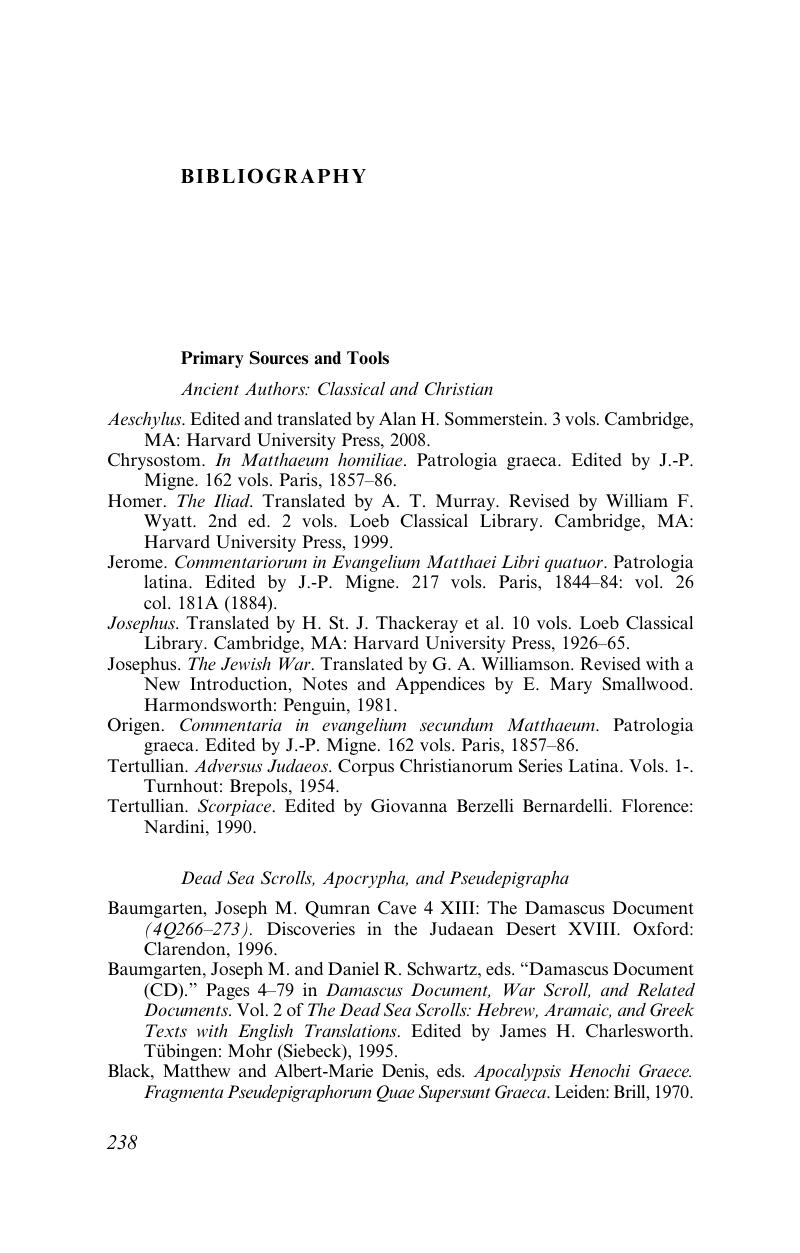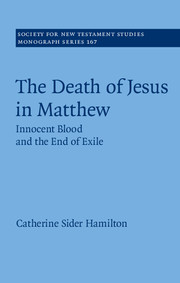Book contents
- The Death of Jesus in Matthew
- Society for New Testament Studies
- The Death of Jesus in Matthew
- Copyright page
- Dedication
- Contents
- Acknowledgments
- Abbreviations
- I Introduction
- II Innocent Blood in Second Temple Jewish and Rabbinic Literature
- III Innocent Blood and the Gospel of Matthew
- IV Conclusion
- Appendix A Elements of Cain/Blood-Flood/Judgment Sequence in Individual Texts
- Bibliography
- Index of Biblical References
- Index of the Pseudepigrapha, Dead Sea Scrolls and Rabbinic Literature
- Index of Selected Subjects
- References
Bibliography
Published online by Cambridge University Press: 15 June 2017
- The Death of Jesus in Matthew
- Society for New Testament Studies
- The Death of Jesus in Matthew
- Copyright page
- Dedication
- Contents
- Acknowledgments
- Abbreviations
- I Introduction
- II Innocent Blood in Second Temple Jewish and Rabbinic Literature
- III Innocent Blood and the Gospel of Matthew
- IV Conclusion
- Appendix A Elements of Cain/Blood-Flood/Judgment Sequence in Individual Texts
- Bibliography
- Index of Biblical References
- Index of the Pseudepigrapha, Dead Sea Scrolls and Rabbinic Literature
- Index of Selected Subjects
- References
Summary

- Type
- Chapter
- Information
- The Death of Jesus in MatthewInnocent Blood and the End of Exile, pp. 238 - 256Publisher: Cambridge University PressPrint publication year: 2017



